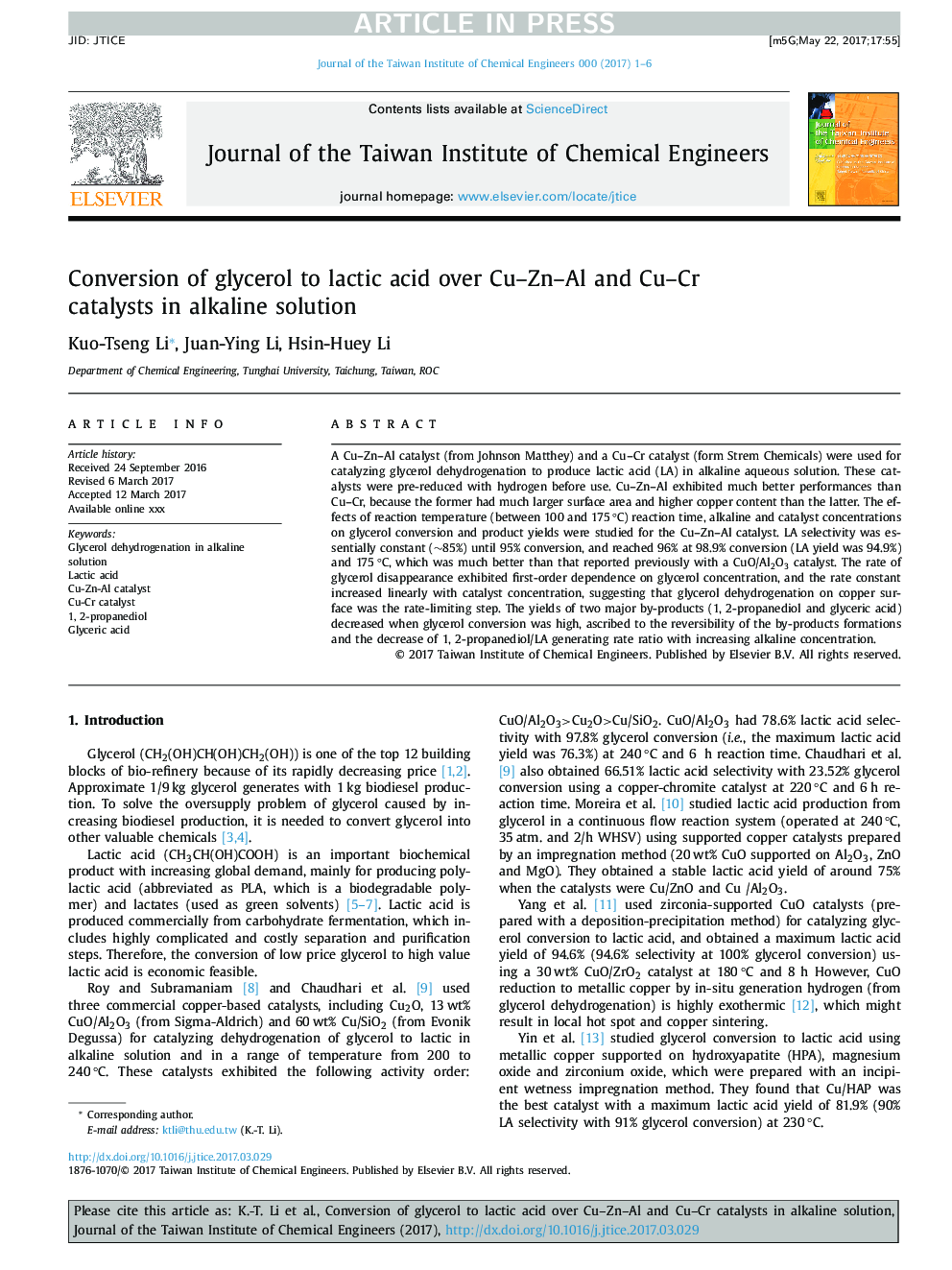| Article ID | Journal | Published Year | Pages | File Type |
|---|---|---|---|---|
| 4998540 | Journal of the Taiwan Institute of Chemical Engineers | 2017 | 6 Pages |
Abstract
A Cu-Zn-Al catalyst (from Johnson Matthey) and a Cu-Cr catalyst (form Strem Chemicals) were used for catalyzing glycerol dehydrogenation to produce lactic acid (LA) in alkaline aqueous solution. These catalysts were pre-reduced with hydrogen before use. Cu-Zn-Al exhibited much better performances than Cu-Cr, because the former had much larger surface area and higher copper content than the latter. The effects of reaction temperature (between 100 and 175 °C) reaction time, alkaline and catalyst concentrations on glycerol conversion and product yields were studied for the Cu-Zn-Al catalyst. LA selectivity was essentially constant (â¼85%) until 95% conversion, and reached 96% at 98.9% conversion (LA yield was 94.9%) and 175 °C, which was much better than that reported previously with a CuO/Al2O3 catalyst. The rate of glycerol disappearance exhibited first-order dependence on glycerol concentration, and the rate constant increased linearly with catalyst concentration, suggesting that glycerol dehydrogenation on copper surface was the rate-limiting step. The yields of two major by-products (1, 2-propanediol and glyceric acid) decreased when glycerol conversion was high, ascribed to the reversibility of the by-products formations and the decrease of 1, 2-propanediol/LA generating rate ratio with increasing alkaline concentration.
Keywords
Related Topics
Physical Sciences and Engineering
Chemical Engineering
Process Chemistry and Technology
Authors
Li Kuo-Tseng, Li Juan-Ying, Li Hsin-Huey,
